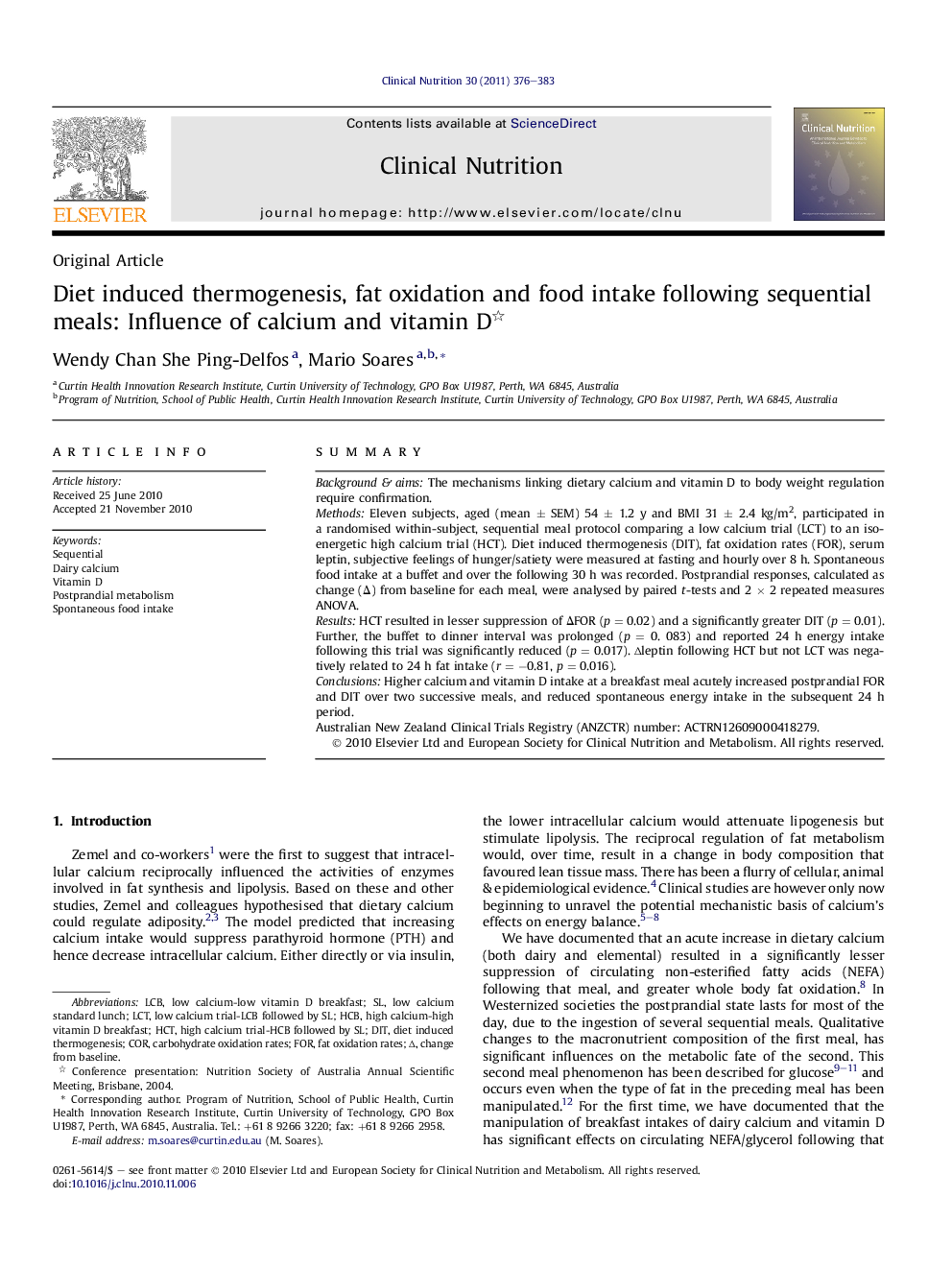| کد مقاله | کد نشریه | سال انتشار | مقاله انگلیسی | نسخه تمام متن |
|---|---|---|---|---|
| 2689833 | 1143229 | 2011 | 8 صفحه PDF | دانلود رایگان |

SummaryBackground & aimsThe mechanisms linking dietary calcium and vitamin D to body weight regulation require confirmation.MethodsEleven subjects, aged (mean ± SEM) 54 ± 1.2 y and BMI 31 ± 2.4 kg/m2, participated in a randomised within-subject, sequential meal protocol comparing a low calcium trial (LCT) to an isoenergetic high calcium trial (HCT). Diet induced thermogenesis (DIT), fat oxidation rates (FOR), serum leptin, subjective feelings of hunger/satiety were measured at fasting and hourly over 8 h. Spontaneous food intake at a buffet and over the following 30 h was recorded. Postprandial responses, calculated as change (Δ) from baseline for each meal, were analysed by paired t-tests and 2 × 2 repeated measures ANOVA.ResultsHCT resulted in lesser suppression of ΔFOR (p = 0.02) and a significantly greater DIT (p = 0.01). Further, the buffet to dinner interval was prolonged (p = 0. 083) and reported 24 h energy intake following this trial was significantly reduced (p = 0.017). ∆leptin following HCT but not LCT was negatively related to 24 h fat intake (r = −0.81, p = 0.016).ConclusionsHigher calcium and vitamin D intake at a breakfast meal acutely increased postprandial FOR and DIT over two successive meals, and reduced spontaneous energy intake in the subsequent 24 h period.Australian New Zealand Clinical Trials Registry (ANZCTR) number: ACTRN12609000418279.
Journal: Clinical Nutrition - Volume 30, Issue 3, June 2011, Pages 376–383